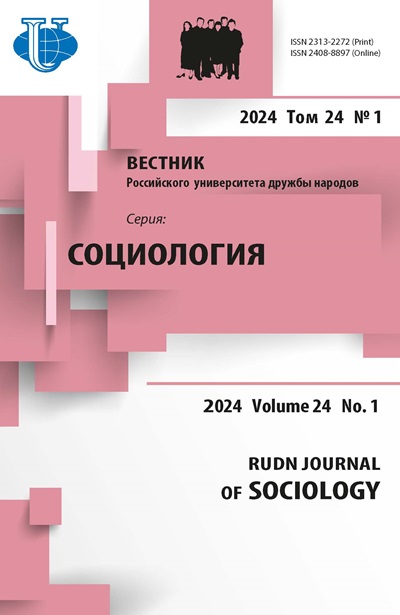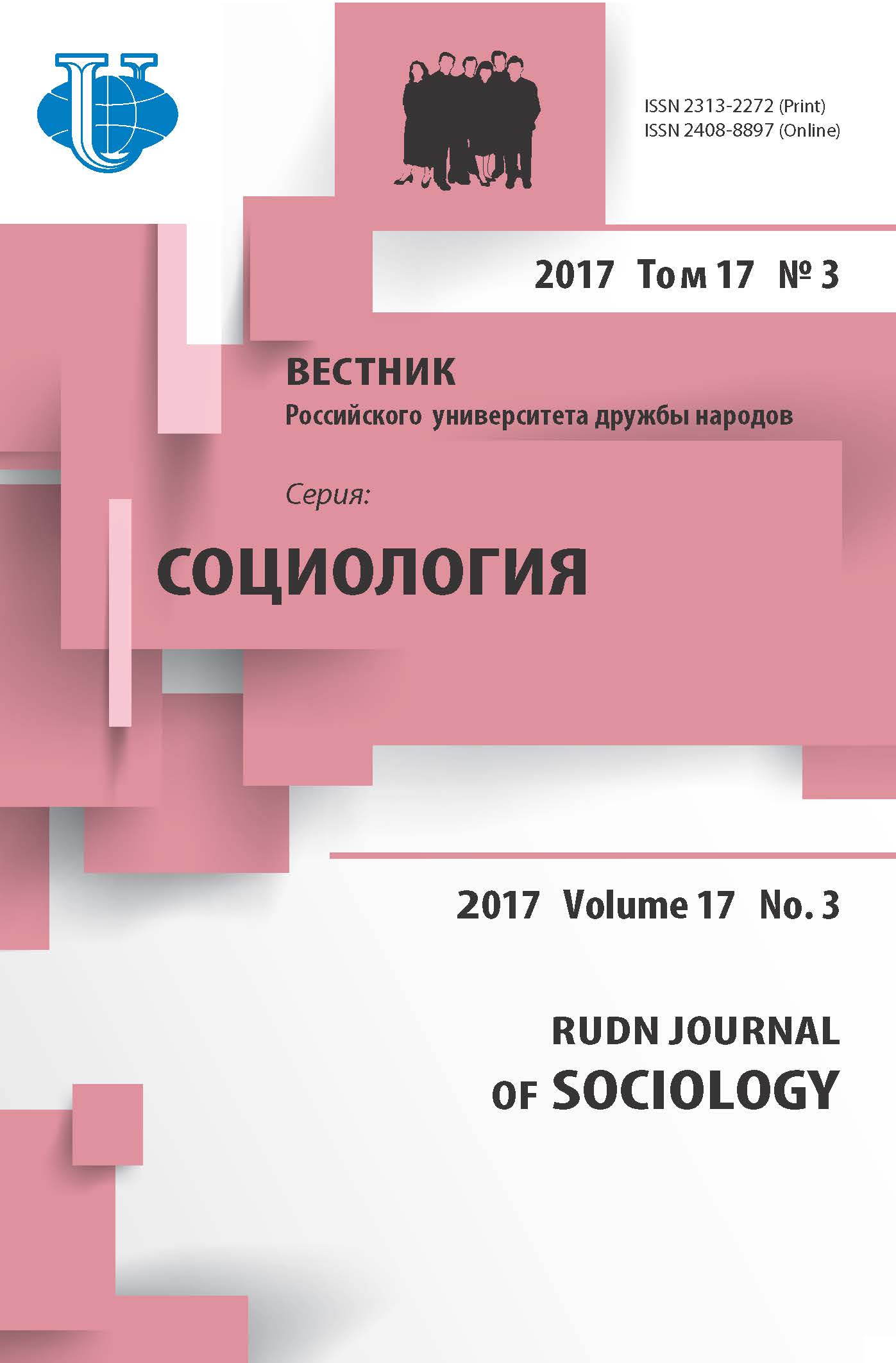THE ART OF NOT BEING GOVERNED: ORALITY, WRITING, AND TEXTS
- Authors: Scott J1
-
Affiliations:
- Yale University
- Issue: Vol 17, No 3 (2017)
- Pages: 267-288
- Section: Theory, Methodology and History of Sociological Research
- URL: https://journals.rudn.ru/sociology/article/view/16801
- DOI: https://doi.org/10.22363/2313-2272-2017-17-3-267-288
Cite item
Full Text
Abstract
The article presents a fragment of the book by J. Scott devoted to Zomia - an expanse of 2.5 million square kilometers containing about one hundred million minority peoples of truly bewil-dering ethnic and linguistic variety; what makes it interesting is its ecological variety as well as its relation to states. Zomia is the largest remaining region of the world whose peoples until recently have not been fully incorporated into nation-states. Its days are numbered. Not so very long ago, however, such self-go-verning peoples were the great majority of humankind. Today, they are seen from the valley kingdoms as “our living ancestors,” “what we were like before we discovered wet-rice cultivation, Buddhism, and civiliza-tion.” On the contrary, hill peoples are best understood as runaway, fugitive, maroon communities who have, over the course of two millennia, been fleeing the oppressions of state-making projects in the val-leys - slavery, conscription, taxes, corvee labor, epidemics, and warfare. Virtually everything about these people’s livelihoods, social organization, ideologies, and (more controversially) even their largely oral cul-tures, can be read as strategic positionings designed to keep the state at arm’s length. Their physical disper-sion in rugged terrain, their mobility, their cropping practices, their kinship structure, their pliable ethnic identities, and their devotion to prophetic, millenarian leaders effectively serve to avoid incorporation into states and to prevent states from springing up among them. Most of the peoples dwelling in the massif seem to have assembled a comprehensive cultural portfolio of techniques for evading state incorporation while availing themselves of the economic and cultural opportunities its proximity presented. Their broad reper-toires of languages and ethnic affiliations, their capacity for prophetic reinvention, their short and/or oral genealogies, and their talent for fragmentation all form elements in their formidable travel kit.
About the authors
J Scott
Yale University
Email: james.scott@yale.edu
Box 208209, New Haven, CT 06520-8206
References
- Andaya B.W. To Live as Brothers: Southeast Sumatra in the Seventeenth and Eighteenth Centuries. Honolulu: University of Hawai’i Press; 1993.
- Buckley Ebery P. The Cambridge Illustrated History. Cambridge University Press; 1996.
- Collins J., Blot R. Literacy and Literacies: Text, Power, and Identity. Cambridge University Press; 2003.
- Cummings W. Making Blood White: Historical Transformations in Early Modern Makassar. Honolulu: University of Hawai’i Press; 2002.
- Evrard O. Interethnic systems and localized identities: The Khmu subgroups (Tmoy) in Northwest Laos. Social Dynamics in the Highlands of Southeast Asia: Reconsidering the Political Systems of Highland Burma by E.R. Leach. Ed. by F. Robinne, M. Sadan. Leiden: Brill; 2007.
- Fiskesjö M. The Fate of Sacrifice and the Making of Wa History. Ph.D. thesis. University of Chicago; 2000.
- Fonseca I. Bury Me Standing: The Gypsies and Their Journey. N.Y.: Knopf; 1995.
- Harris R. Rethinking Writing. L.: Athlone; 2000.
- Harris R. The Origin of Writing. L.: Duckworth; 1986.
- Havelock E.A. The Muse Learns to Write: Reflections on Orality and Literacy from Antiquity to the Present. New Haven: Yale University Press; 1986.
- Heather P. The Fall of the Roman Empire: A New History of Rome and the Barbarians. Oxford University Press; 2006.
- Hill P. The World Turned Upside Down: Radical Ideas during the English Revolution. Harmondsworth: Penguin; 1975.
- Janko R. Born of Rhubarb. Review of M.L. West “Indo-European Poetry and Myth”. Oxford University Press, 2008. Times Literary Supplement. February 22, 2008.
- Jonsson H. Shifting Social Landscape: Mien (Yao) Upland Communities and Histories in State- Client Settings. Ph.D. diss. Cornell University; 1996.
- Kopytoff I. The African Frontier: The Reproduction of Traditional African Societies. Bloomington: Indiana University Press; 1987.
- Kosseleck R. The Practice of Conceptual History: Timing, History, Spacing Concepts. Stanford University Press; 2002.
- Larsen M.T. Introduction “Literacy and social complexity”. State and Society: The Emergence and Development of Social Hierarchy and Political Centralization. Ed. by J. Gledhill, B. Bender, М.T. Larsen. L.: Routledge; 1988.
- Leach E. The Political Systems of Highland Burma: A Study of Kachin Social Structure. Cambridge: Harvard University Press; 1954.
- Levi-Strauss P. Tristes Tropiques. Trans. by J. Weightman, D. Weightman. N.Y.: Atheneum; 1968.
- Lewis P. Ethnographic Notes on the Akha of Burma. New Haven: HRA Flexbooks; 1969-1970. Vol. I.
- Lord A. The Singer of Tales. N.Y.: Atheneum, 1960.
- Michaud J. Historical Dictionary of the Peoples of the Southeast Asian Massif. Lanham: Scarecrow; 2006.
- Nieke M.R. Literacy and power: The introduction and use of writing in early historic Scotland. State and Society: The Emergence and Development of Social Hierarchy and Political Centralization. Ed. by J. Gledhill, B. Bender, М.T. Larsen. L.: Routledge; 1988.
- Rastdorfer J.-M. On the Development of Kayah and Kayan National Identity: A Study and a Bibliography. Bangkok: Southeast Asian Publishing; 1994.
- Reid A. Southeast Asia in the Age of Commerce, 1450-1680. Vol. I. The Lands Below the Winds. New Haven: Yale University Press; 1988.
- Renard R.D. Kariang: History of Karen-Tai Relations from the Beginnings to 1923. Ph.D. diss. University of Hawai’I; 1979.
- Richards T. Archive and utopia. Representations. 1992; 37.
- Rosaldo R. Ilongot Headhunting, 1883-1974: A Study in Society and History. Stanford University Press; 1980.
- Sadan M.J. History and Ethnicity in Burma: Cultural Contexts of the Ethnic Category “Kachin” in the Colonial and Postcolonial State, 1824-2004. Bangkok; 2005.
- Scott J.G. [Shway Yoe]. The Burman: His Life and Notions. N.Y.: Norton; 1963.
- Tapp N. Sovereignty and Rebellion: TheWhite Hmong of Northern Thailand. Singapore: Oxford University Press; 1990.
- Trager F.N., Koenig W.J., Yi Yi. Burmese Sit-tans, 1764-1826: Records of Rural Life and Administration. Tucson: University of Arizona Press; 1979.
- Vansina J. Oral History as Tradition. L.: James Currey, 1985.
- von Geusau L.A. Akha internal history: Marginalization and the ethnic alliance system. Civility and Savagery: Social Identity in Tai States. Ed. by A. Turton. Richmond: Curzon; 2000.
- Walker A.R. Merit and the Millennium: Routine and Crisis in the Ritual Lives of the Lahu People. Delhi: Hindustan Publishing; 2003.














